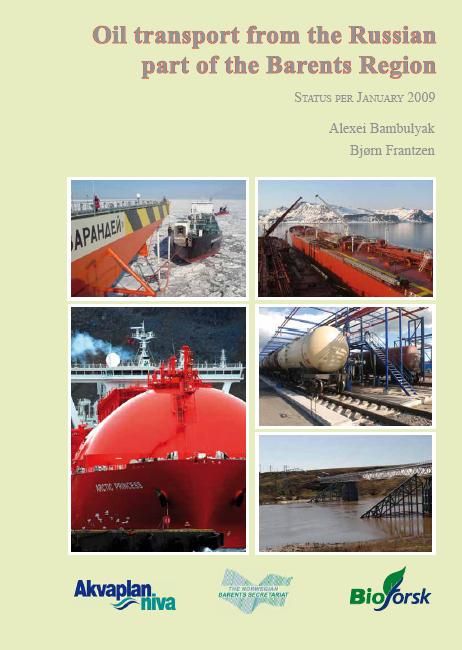A new report, "Oil Transport from the Russian Part of the Barents Region. Status per January 2009," from The Norwegian Barents Secretariat and Akvaplan-niva AS is now available online. The report, written by, Alexei Bambulyak, Akvaplan-niva and Bjorn Frantzen, and Bioforsk Svanhovd is available here.
This report gives an update of the status and prospects of oil transport from the Russian part of the Barents Region along the Norwegian coast. Most of the bulk oil and gas cargoes delivered for export through the Barents Sea originate in the Western Siberian and Timano-Pechora fields of Russia.
In this report, authors give an overall description of oil and gas resources, existing and predicted production in Russia, and pay special attention to the Republic of Komi, Nenets and Yamalo-Nenets Autonomous Districts, as well as to the Russian Arctic continental shelf. In the Russian oil and gas transport section of the report, the reader will find information about the Russian transport complex with a focus on oil-and-gas export transportation means. Special attention is given to the description of the existing and prospective onshore and offshore oil and gas trans-shipment terminals along the northern coasts of Russia and Norway, and their connection to oil-and-gas reserves on one hand and to the export routes on the other.
Annual oil volumes transported for export through the Barents Sea rose from 2-million tons in 2002 to 12-million tons in 2004. In the years from 2005 to 2008, the oil deliveries were on the level between 9- and 12-million tons a year. In 2009, Russia will send more than 15-million tons of oil and petroleum products from the Russian Barents Region; half of it will be crude from the new 12-million-ton Varandey terminal launched in 2008. In the Norwegian Barents, Melkoya will add 5-million tons of LNG, LPG, and condensate.
In this report, the authors demonstrate that even without a Russian oil trunk pipeline to the Barents Sea coast, there will be transportation facilities to export over 100-million tons of oil and gas through the
Barents Sea in 2015.
The first LNG from Shtokman should be shipped in 2014, and when the phase-1 plant in Teriberka works at full scale it will send 7.5-million tons of LNG for export. Norway, in addition to Snohvit with 5-million
tons of LNG a year, will put its second in the Barents Sea field, Goliat, on line in 2013, which should produce 5-million tons of oil in 2014.
Implementation of these ambitious plans requires developments in all related spheres where oil spill prevention should be prioritized. The authors pay attention to the environmental safety matters in oil
transportation and to Norwegian-Russian co-operation in this area.
This report is based on the previous reports published in 2003, 2005, and 2007. It is a joint project of the Norwegian Barents Secretariat and Akvaplan-niva, with participation of Bioforsk Svanhovd.
The report consists of 97 pages and includes 140 tables, charts, photos, and maps. The PDF version of the report is available online.
Author contact information is below.
Alexei Bambulyak
General Manager Russia, Akvaplan-niva
Email: ab@akvaplan.niva.no
Bjorn Frantzen
Project leader, Bioforsk Svanhovd
Email: bjorn.frantzen@bioforsk.no
New Report Available Online
Fri, Apr 10, 2009
 Oil Transport from the Russian Part of the Barents Region. Status per
Oil Transport from the Russian Part of the Barents Region. Status perJanuary 2009.
The Norwegian Barents Secretariat and Akvaplan-niva AS
To download the report, please click here.
